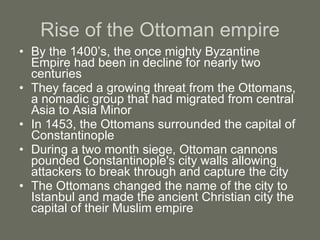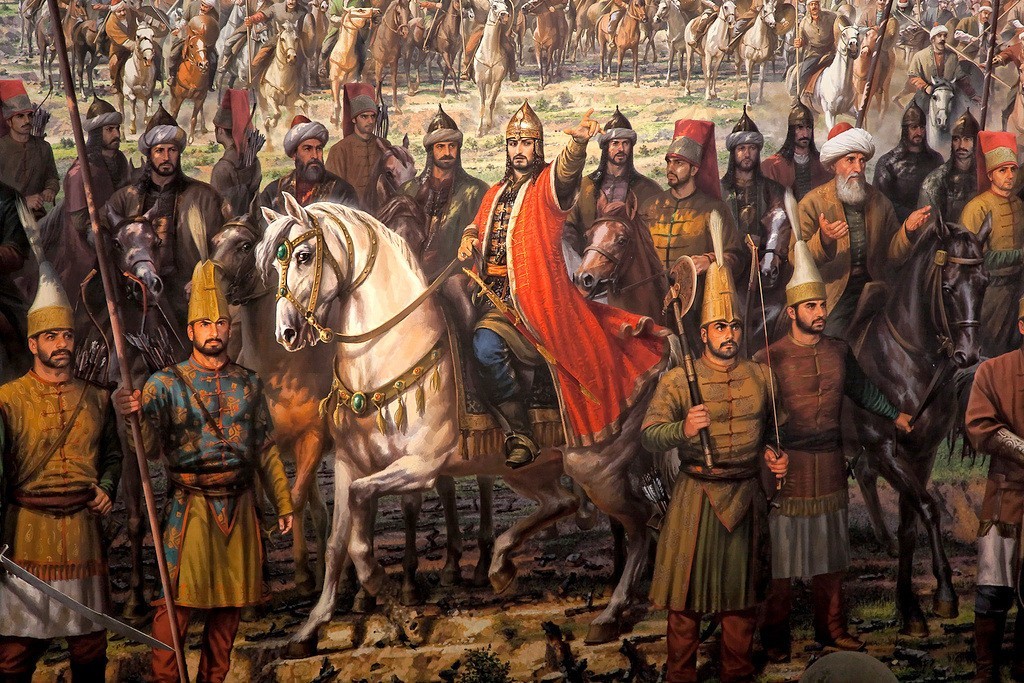The Ottoman Empire was a multi-ethnic and multi-religious state that was founded in 1299 and lasted until 1922. At its height, the Ottoman Empire controlled much of southeastern Europe, western Asia, and northern Africa, making it one of the most powerful empires in history.
The rise of the Ottoman Empire can be traced back to its founder, Osman I, who was the leader of a small Turkish tribe in Anatolia. Under his leadership, the Ottoman Turks were able to expand their territory and conquer new lands. This expansion continued under Osman's successors, who were able to defeat rival powers and incorporate their territories into the Ottoman Empire.
One of the key factors in the rise of the Ottoman Empire was its ability to adapt and incorporate the cultures and traditions of the lands it conquered. The Ottomans were able to create a diverse and tolerant society that was able to accommodate the needs of its many different ethnic and religious groups. This helped to create a sense of unity and solidarity within the empire, which was a key factor in its success.
However, the Ottoman Empire began to decline in the 18th and 19th centuries due to a number of internal and external factors. One of the main reasons for the decline of the Ottoman Empire was the rise of nationalism among its various ethnic and religious groups. This led to a series of uprisings and rebellions, which weakened the empire's control over its territories.
Another factor in the decline of the Ottoman Empire was the increasing interference of European powers in its affairs. The Ottomans were forced to sign a series of treaties that granted European powers special privileges and concessions, which further weakened their authority.
The final straw for the Ottoman Empire came during World War I, when it sided with the Central Powers (Germany, Austria-Hungary, and the Ottoman Empire) against the Allies (France, the United Kingdom, and Russia). The Ottoman Empire was defeated and was forced to sign the Treaty of Sevres, which dismantled much of its territory and imposed harsh terms on the remaining parts.
The Ottoman Empire officially came to an end in 1922, when it was replaced by the Republic of Turkey. Today, the legacy of the Ottoman Empire can still be seen in the many cultures and traditions that it helped to shape, as well as in the modern-day countries that were once part of its territory.






